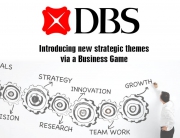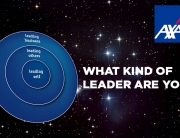The upcoming city builders
The Compliance game takes place in the construction industry. A lot of activities you find in this industry, you will also find in this game in a simplified version. This includes the (tough) choices a contractor has to make. Will you take bribes to achieve a better result? How will you obtain the most profitable tender? And who will be seduced into starting the construction even though the safety regulations aren’t completely ensured?
In the game positive behavior is rewarded and wrong behavior bares consequences for the client relations or the appreciation of the organization. In this safe environment participants experience the do’s and don’ts and the long-term impact it has. Everyone comes into contact with each other, either for a joint action or to compete with each other.
By using a metaphor participants feel free to act out their natural behavior and make decisions accordingly. How do they respond when they are confronted by urgent (Safety & Compliance) matters? Will they, despite the time pressure, still make the right calls?
How do I inform employees about Safety & Compliance?
Nowadays, terms like Safety & Compliance are a hot topic among various organizations. Not only in the world of finance is enforcement of rules and regulations an essential issue, also in the food industry, health care and the construction industry operating according to the framework is vital to prevent reputational damage. After all, rules are there for a reason. When companies bend the rules too much, dangerous situations could arise, both for the employees and the consumers. For example, working without a safety helmet or the production of baby food where the hygiene regulations are not properly met.
At Businessgames, we firmly believe in an interactive way of learning. We developed a game to expose Safety & Compliance and to make people aware of the consequences of their actions. Building the city as a contractor is the context of the game. The link to your organization may not always be crystal clear but in the interactive evaluation everyone assesses their own behavior. What went right and what went wrong? And how does this translate to your own organization?
- Zurich Insurance GroupSamara Couwenberg2022-06-20T09:55:53+00:00
- AdnocSamara Couwenberg2022-06-20T09:56:40+00:00
- AkzoNobelSamara Couwenberg2022-06-20T09:56:35+00:00
- DBSSamara Couwenberg2018-03-26T09:04:29+00:00
- AxaSamara Couwenberg2016-06-08T14:04:24+00:00
- Credit SuisseSamara Couwenberg2016-06-08T14:05:10+00:00
- PhilipsSamara Couwenberg2016-05-17T15:03:44+00:00









